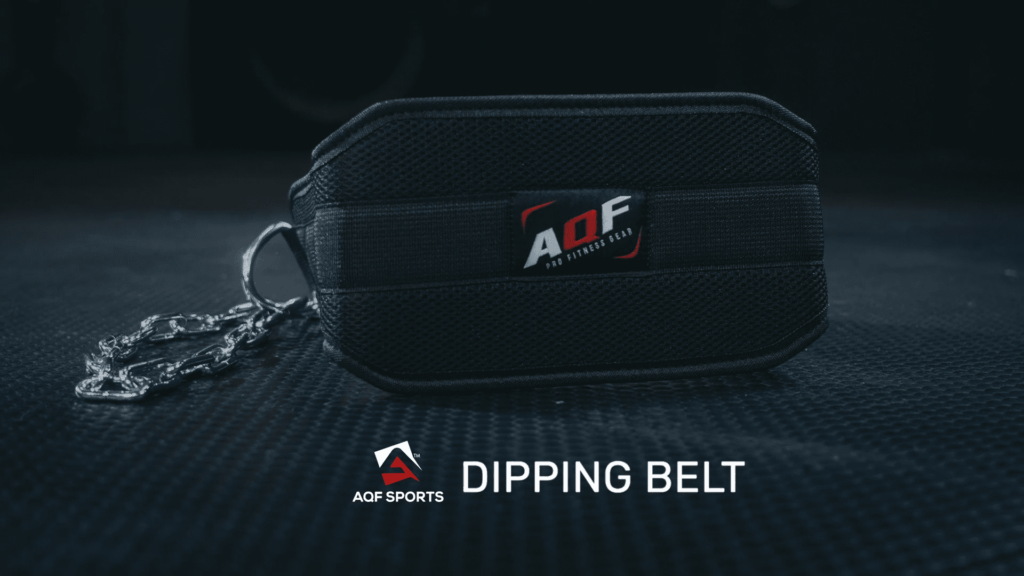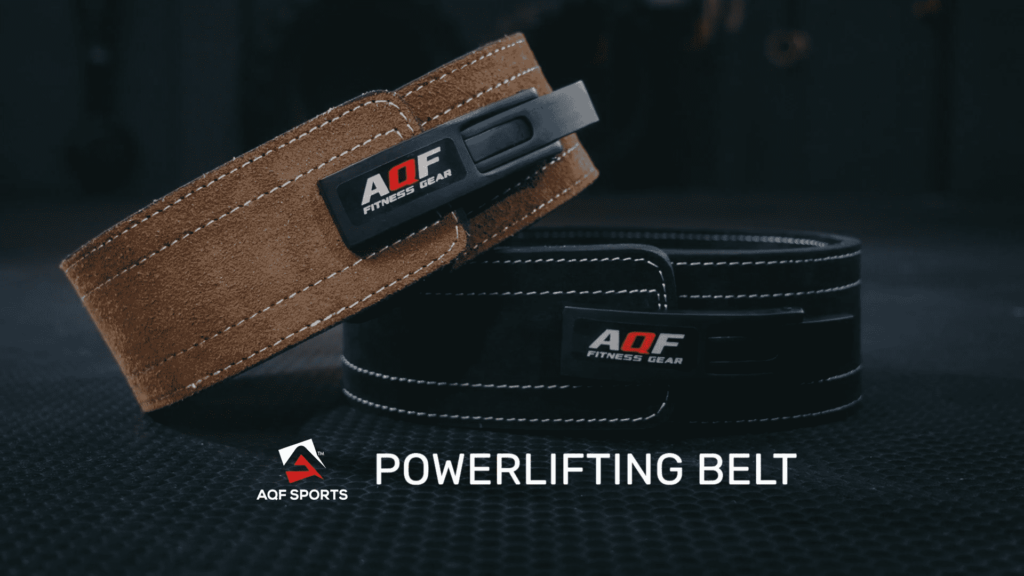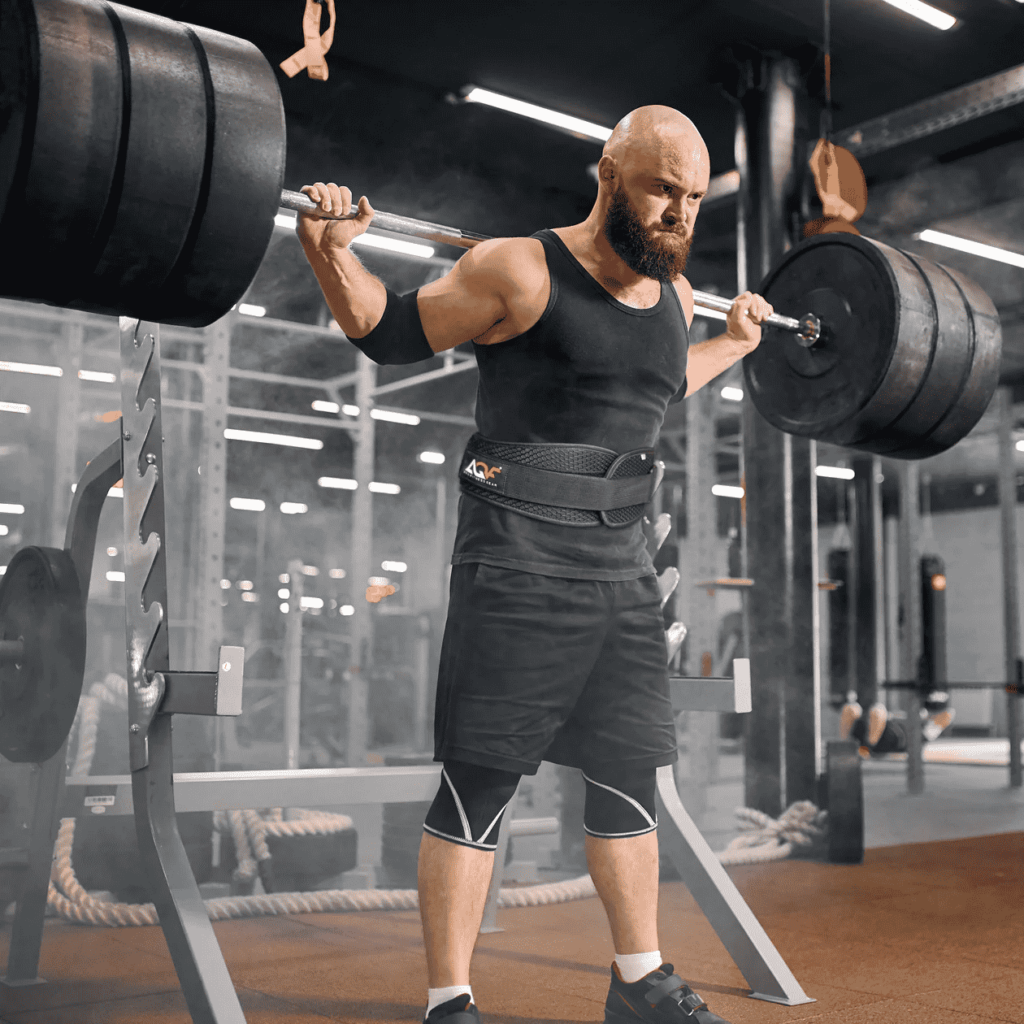Weightlifting Belt for Beginners: Complete Guide

Ready to level up your core training sessions? Weight Lifting belt might just be what you need to break out of your comfort zone. A weightlifting belt for beginners is a valuable gym accessory, but it’s important to understand its purpose and when to use it.
What does a weightlifting belt do?

A weightlifting belt provides support to the lower back and core during heavy lifts. It works by increasing intra-abdominal pressure, stabilising the spine, and reducing stress on the lower back. The primary function is not to support the back directly but to give your core something to push against, creating a more stable platform for lifting.
How does a Weightlifting Belt for Beginners help?
Increases Intra-abdominal Pressure:
When you brace against the belt, it creates higher intra-abdominal pressure, which supports the core and spine. This is particularly beneficial when lifting heavy weights.
Prevents Hyperextension:
Wearing a belt can also act as a feedback mechanism, helping you become more aware of your core engagement and breathing patterns. It prevents hyperextension of core muscles to avoid injuries.
Suggested Read: The Common Weightlifting Belt Mistakes You Must Avoid for Better Results

DO Wear a Weightlifting Belt If:
- You are Lifting Heavy Weights:
When you’re pushing serious weight, especially during compound movements like squats and deadlifts, a belt can provide added support.
- Working Out on Intensity Days:
On days when you’re going all out, the belt can help stabilize your spine and reduce the risk of injury.
- You are an Experienced Lifter:
If you’ve got the hang of proper lifting form and technique, a belt can be a useful addition to your gear.
- You Prefer The Extra Core Support:
Some lifters find that a belt gives them added confidence and support, even during moderately heavy lifts. If it feels right for you, go for it.
- You want to Maintain Form:
When fatigue kicks in and maintaining perfect form becomes challenging, a belt can help you keep your technique on point.

DON’T Wear a Weightlifting Belt If:
- You Are A New Lifter:
If you’re just starting, hold off on the belt. Let your muscles get strong on their own first.
- Have a History of Past Injuries:
If you’ve had back or stomach issues, talk to your doctor before using a belt. It’s not a one-size-fits-all solution.
- You Have a Health Condition:
If you’ve got health concerns like high blood pressure, get the green light from your doctor before using a belt. Breathing with a belt can briefly raise your blood pressure.
- You are Doing Easy Sets:
For light warm-up sets, leave the belt behind. Save it for when you’re lifting heavy.
- You are Learning the Form:
If you’re still getting the hang of lifting form, skip the belt for now. Build up those core muscles naturally.
A Weightlifting Belt is Not a Substitute for Weak Core:
A weightlifting belt should not be seen as a substitute for developing a strong and stable core. It complements core strength but doesn’t replace it.
The effectiveness of a weightlifting belt varies among individuals. Some find it extremely beneficial, while others may not feel a significant difference.
Weightlifting Belt Activates Critical Core Muscles
Wearing a weightlifting belt during heavy squats and deadlifts increases activation of the rectus abdominis and oblique muscles, enhancing core strength and improving force transmission [1].
Research suggests that a weightlifting belt improves segmental stabilization of the lumbar spine, particularly beneficial for individuals with a history of lower back issues. Weightlifting belts increase IAP to support the spine during lifts. [2].

The belt minimizes energy leakage through the torso during lifts, directing more energy towards moving the weight and enhancing power output [3].

Consistent use of a weightlifting belt is associated with neural adaptations, leading to a heightened neuromuscular connection and improved motor control even without the belt.

Scientific literature highlights the role of weightlifting belts in optimizing breathing patterns, promoting the Valsalva maneuver for enhanced core stability and consistent breathing rhythm during lifts.
Research proposes that even during submaximal lifts and deadlifts, weightlifting belts can reduce the risk of lower back injuries by providing additional support and stability.
Suggested Read: 7 Common Sports Injuries You Need to Know About!

Does Training with a Weightlifting Belt Weaken Your Core?
It’s a common fear.
No, training with a weightlifting belt will not inherently make your core weaker.
In fact, when used appropriately, a weightlifting belt can contribute to core strength. The key is understanding the role of the belt and incorporating it judiciously into your training.
A study published in the Journal of Strength and Conditioning Research examined the effects of long-term weightlifting belt use on muscle activity [4].
The findings revealed that wearing a belt did not lead to decreased muscle activity in the core muscles. Instead, it showed increased activation of the rectus abdominis and external obliques, indicating that the belt can actually enhance muscle engagement in these areas during lifts.
The misconception that weightlifting belts weaken the core may stem from the idea that relying solely on external support without developing intrinsic strength could be counterproductive.
However, when used as a tool in conjunction with proper core-focused exercises, the belt can provide a supportive environment for lifting heavier loads, leading to overall strength gains.
To prevent potential drawbacks, it’s crucial to strike a balance.
- Incorporate exercises specifically targeting core strength without the belt to ensure comprehensive development.
- The weightlifting belt should be seen as an accessory to enhance performance rather than a substitute for fundamental core training.
- Used thoughtfully, a weightlifting belt can be a valuable asset in your training toolkit without compromising core strength.

Things to Look for in a Weightlifting Belt for Beginners
Material and Durability:
Look for a belt made from sturdy materials like leather or high-quality synthetic materials. Durability is key for long-term use.
Width and Thickness:
Opt for a belt with a width of around 4 inches. This width provides ample support to the lower back without hindering movement. Thickness should be sufficient for durability but not overly bulky.
Buckle or Lever Closure:
Beginners often find buckle closures easier to use and adjust compared to lever mechanisms. A secure and adjustable closure ensures a snug fit for effective support.
Weightlifting Belt for Beginners: Pro Tips
Break-In Period:
New leather belts may have a break-in period. Flex the belt and wear it snugly (but not overly tight) to allow it to mold to your body shape.
Consistent Use:
Wear the belt consistently during heavier lifts, but avoid dependency. Using it for every exercise might hinder the development of core strength.
Educate Yourself:
Learn proper bracing techniques and understand when to use the belt. It’s not a one-size-fits-all solution and should complement, not replace, good lifting form.
Storage and Care:
Store your belt properly to maintain its shape and prevent unnecessary wear. Avoid leaving it in extreme temperatures, and clean it regularly if it’s made of leather.
Weightlifting Belt for Beginners: Bracing Techniques
Effective bracing techniques are crucial when using a weightlifting belt to maximize its benefits and enhance stability. Here are some good weightlifting belt bracing techniques:
Deep Breath and Hold:
Before initiating the lift, take a deep breath into your diaphragm, expanding your chest and belly. Hold this breath as you perform the lift. This is known as the Valsalva maneuver and helps create intra-abdominal pressure for enhanced core stability.
360-Degree Expansion:
Focus on breathing and bracing not only into your belly but also expanding your breath throughout your entire core. This includes the sides and lower back. This 360-degree expansion ensures comprehensive stability.
Rib Cage and Pelvic Connection:
Imagine connecting your rib cage and pelvis by bracing your core muscles. This connection creates a solid foundation for your spine during heavy lifts. Engage both the front and sides of your core.
Brace Before Movement:
Brace your core and establish intra-abdominal pressure before initiating the lift. This is crucial for maintaining stability throughout the entire range of motion.
Maintain Tension:
Keep tension in your core muscles throughout the lift. Don’t release the breath or relax the core until you’ve completed the movement. This ongoing tension ensures consistent support.
Practice with Lighter Weights:
When starting out, practice these bracing techniques with lighter weights to reinforce proper form and muscle engagement. As you become more comfortable, gradually increase the weight.
Same Technique Across Exercises:
Maintain a consistent bracing technique across different exercises. Whether you’re squatting, deadlifting, or pressing, the principles of deep breathing and core bracing remain fundamental.
Brace for Impact:
Imagine bracing as if you’re preparing for a punch to the stomach. This involves tensing your abdominal muscles to create a stable core platform.
Mindful Repetition:
Pay attention to your bracing technique with each repetition. Consistent and mindful practice will help engrain proper form into your lifting routine.
Feedback from the Belt:
Use the feedback from the belt. If you feel the belt pushing against your core, it means you’re successfully creating intra-abdominal pressure and stabilizing your spine.
Types of Weightlifting Belts for Beginners:
4” Inch Cowhide Leather Belts: Longterm Use
Leather belts, often made from genuine cowhide, are sturdy and durable. They typically have a consistent width throughout and may feature single or double prong buckles.
Excellent for providing strong and consistent support during heavy lifts, making them a popular choice for powerlifting and weightlifting enthusiasts.

Dipping Belts: Progressive Resistance
Dipping belts are designed specifically for weighted dips and pull-ups. They typically consist of a chain or strap that can hold weight plates, allowing you to add resistance to bodyweight exercises.
Ideal for individuals looking to progressively add resistance to calisthenics exercises, effectively targeting the muscles involved in dips and pull-ups.

Powerlifting Belts: Level Up!
Powerlifting belts are specialized belts designed for competitive powerlifting. They are typically 4 inches wide throughout, providing maximum support to the lower back during heavy squats and deadlifts. They often have a single prong or lever closure.
Designed to meet the specific needs of powerlifters, offering maximal support for the spine during the heaviest lifts in competition.

Training Belts: Regular Use
The term “training belt” is somewhat generic and can refer to various types of belts used for weightlifting. It may include belts designed for general strength training and fitness purposes.
Depending on the specific design, training belts can provide support during a range of exercises, making them versatile for individuals engaging in various strength training activities.

Weightlifting belt for Beginners in a Nutshell
Choosing a weightlifting belt as a beginner is straightforward. Aim for one that’s about 4 inches wide, made from durable materials like leather, and easy to adjust with a buckle. Comfort matters, so look for a belt with a good lining to avoid any discomfort.
Now, when using the belt, remember to brace. Take a deep breath, tighten your core like you’re readying for a punch, and keep that tension during the lift. Practice these techniques with lighter weights until you get the hang of it.
The beauty of the weightlifting belt? It’s your support system, not a shortcut. It helps keep your back in check and enhances stability. So, invest wisely, consider your budget, and enjoy the added confidence and support as you dive into weightlifting!
Explore More Topics
- How to Protect Yourself from Serious MMA Injuries?
- Powerlifting vs Weightlifting Belt: Which One Is For You?
- Leather vs Nylon Lifting Belt! How to Choose the Right One?
- Say Goodbye to Weightlifting Calluses With These 7 Tips
References:
[1] PubMed – The influence of weightlifting belts and wrist straps on…
[2] PubMed – Effect of a weightlifting belt on spinal shrinkage.
[3] The weight lifting belt’s impact on power output, velocity and range of motion in a squat
[4] Effect of lifting belts on trunk muscle activation during a suddenly applied load






